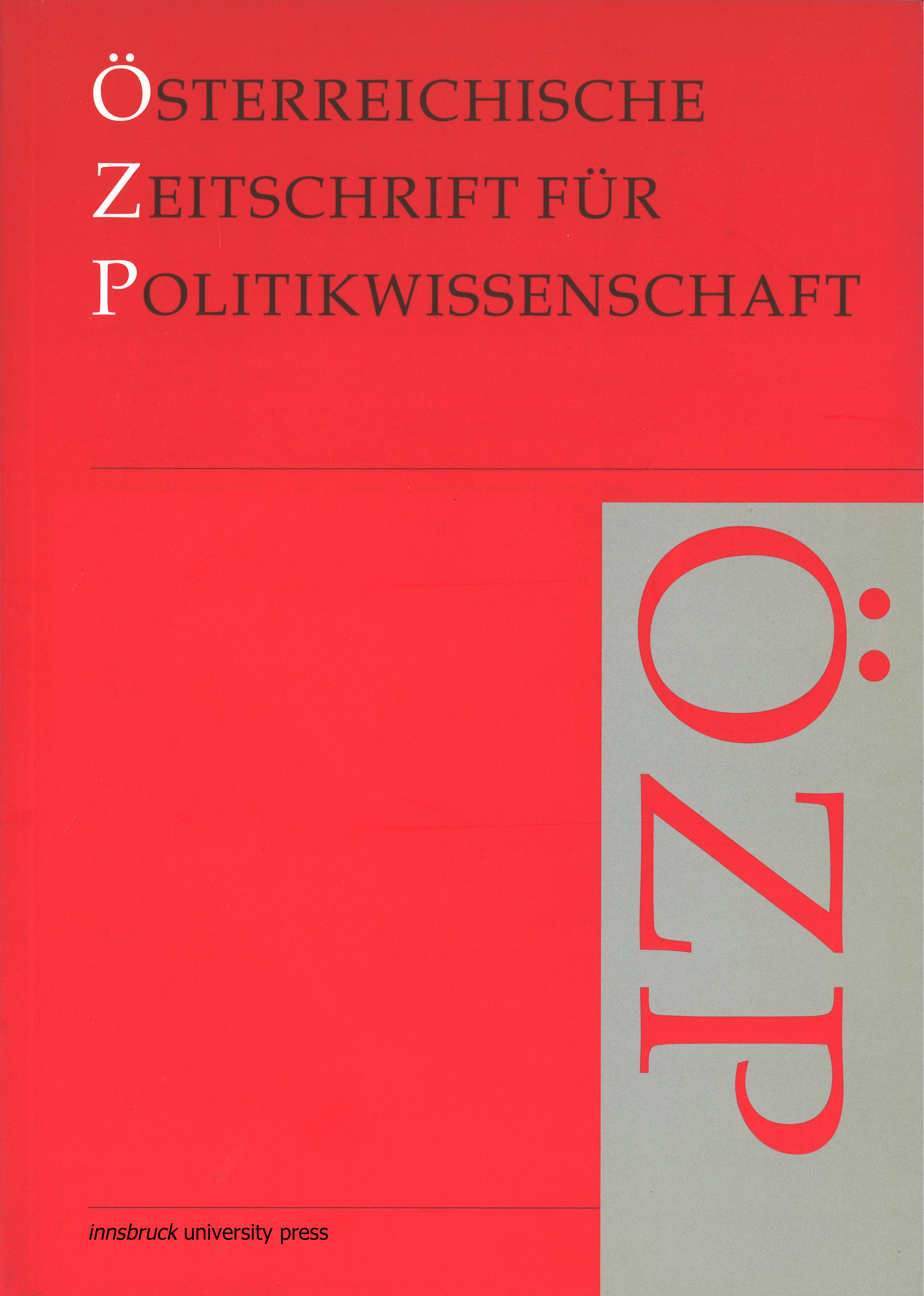Correlates of district-level turnout in Vienna: What role does electoral exclusion play?
DOI:
https://doi.org/10.15203/ozp.3018.vol49iss2Keywords:
turnout, citizenship, electoral rights, participation, electionAbstract
With an increasing share of voting-age residents without Austrian citizenship, Vienna is a striking example of a boundary problem of electoral participation. Without Austrian citizenship comes an exclusion from electoral rights at national, regional and, for some, also at European elections. The paper examines turnout rates and their socio-demographic covariates for 11 elections on the aggregate level of districts in Vienna, Austria, from 2004 to 2019. The analysis shows that aggregate turnout is statistically associated with socio-economic district characteristics, diversity within the electorate and the proportion of individuals not eligible to vote. To conclude, the paper discusses possible mechanisms behind the correlation of electoral exclusion and turnout and provides perspectives for further empirical tests of such mechanisms.Downloads
Published
Issue
Section
License
Copyright (c) 2020 Jeremias Stadlmair

This work is licensed under a Creative Commons Attribution-ShareAlike 3.0 Unported License.
The OZP is the authorized quarterly publication of the Österreichische Gesellschaft für Politikwissenschaft (ÖGPW, Austrian Political Science Association)
The author of an article (in case of multiple authors: the corresponding author, responsible for releasing this material on behalf of any and all co-authors) accepted to be published in the OZP hereby acknowledges the following Copyright Notice:
- The author retains the copyright to the article.
- It is the responsibility of the author, not of the OZP, to obtain permission to use any previously published and/or copyrighted material.
- Publication of a submitted text is dependent on positive results from the peer reviewing. In such a case, the OZP editors have the right to publish the text.
- In case of publication, the article will be assigned a DOI (digital object identifier) number.
- The author agrees to abide by an open access Creative Commons Attribution (CC BY nc) license. The license permits any user to download, print out, extract, reuse, archive, and distribute the article in any non-commercial way, so long as appropriate credit is given to the author and source of the work.
- The license ensures that the author’s article will be available as widely as possible and that the article can be included in any scientific archive. In order to facilitate distribution, the author agrees that the article, once published, will be submitted to various abstracting, indexing and archiving services as selected by the OZP.
- In addition, the author is encouraged to self-archive the article, once published, with reference to the place of the first publication.
- After the contribution appears in the OZP, it is still possible to publish it elsewhere with reference to the place of the first publication.
- The finished article, if published, will include a correspondence address (both postal and email) of the author.
- If written under the auspices of a grant from one or more funding agencies, such as FWF (Austrian Science Fund), ERC (European Research Council), and Horizon 2020 (EU Framework Programme), an article accepted for publication has to be deposited in an Open Access archive. The OZP’s archiving policy is compliant with these provisions. (In case the article derives on funding from a different source, the author is responsible to check compliance of provisions.)




